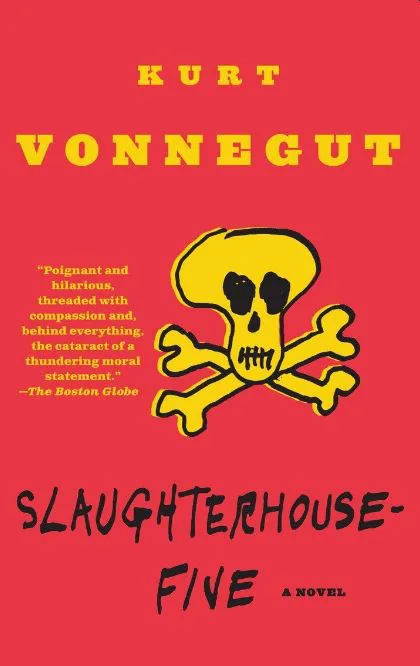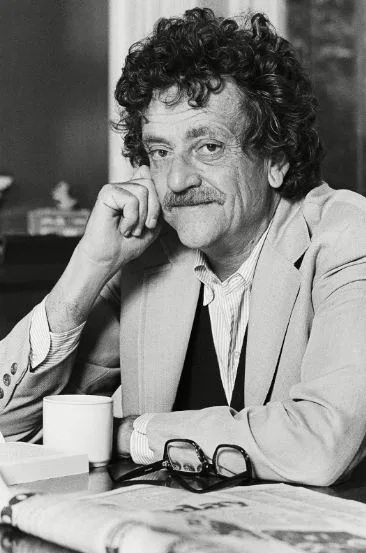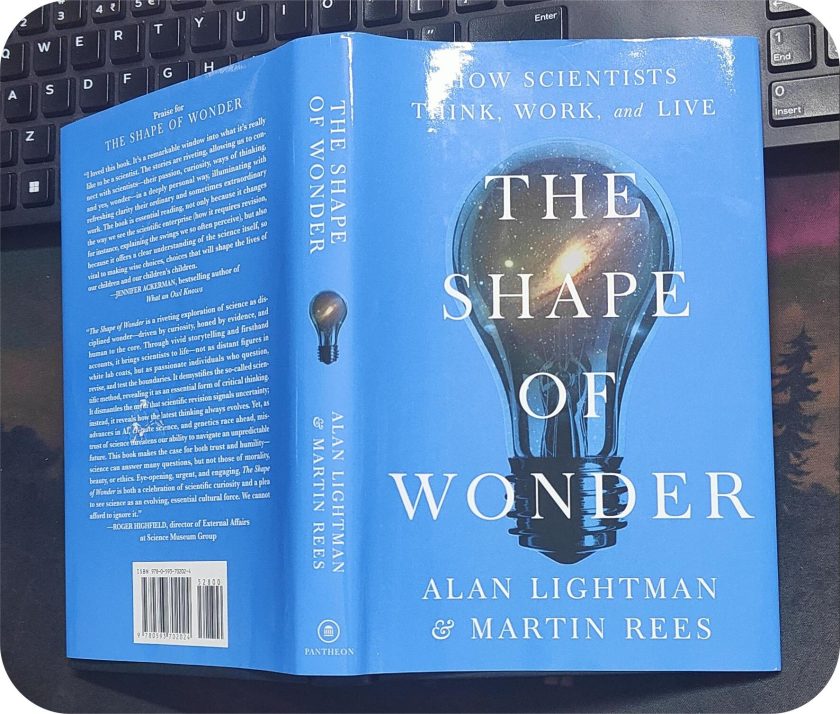
This was my third Vonnegut novel after Timequake and 2BR02B. The book has the similar approach at satirical jab at the tough parts of life that often get overlooked. However, I feel it has a touch of sci-fi also with elements such as time travel and aliens.
Slaughterhouse-Five, is also called, The Children’s Crusade: A Duty-Dance with Death was first published in 1969. In the book, Kurt Vonnegut takes a real close look at the whole anti-war scene. He’s picking up on Nietzsche’s anti-morality vibes. For instance, Vonnegut explores the moral ambiguity surrounding the destructive nature of conflict. He’s calling out the hypocrisy game, pointing out how crazy it is to back mass destruction but slap on the label of ethical warfare.
Essentially, he challenges the sincerity and integrity behind popular anti-war sentiments that, despite their outward appeal, may conceal contradictions and incongruities.
Nietzschean’s Absurdity, Fatalism, and Individualism
Nietzsche’s influence on existential philosophy is mirrored in Vonnegut’s portrayal of the absurdity of war and the fatalistic elements, aligning with Nietzsche’s ideas of eternal recurrence.
When it comes to emphasize individual perspectives, in the novel, Vonnegut uses the character Billy Pilgrim to offer a unique viewpoint on war, paralleling Nietzsche’s emphasis on individual interpretation of morality.
I’d also like to add, Vonnegut, influenced by Nietzschean thought, critiques societal norms and structures, question the established moral frameworks that justify war.
The Plot: Spoiler Alert!
The protagonist of the story is Billy Pilgrim, a World War II chaplain. Active duty isn’t Billy Pilgrim’s forte. As soon as he hits the front lines during the Battle of the Bulge, he’s separated from his unit. Thus, laying the groundwork for a far-from-ideal military journey.
Feeling overwhelmed and hurt, Pilgrim just wished to be left alone to die, but even that seemed too tough for him. His friend, Roland Weary, insisted on sticking with him and pushed him forward.
When they got captured, both Weary and Pilgrim were in such bad condition that their captors took photos to show how poorly equipped the American Army could be. Vonnegut, drawing from his own experiences in World War II, constantly reminds the reader of why he holds anti-war views.
Burning Dresden: Churchill’s Controversial Decision and its Impact on WWII Diplomacy
In the aftermath of the Dresden bombing raid, a key focus in the book, the devastation becomes clear. The raid, violating the rules of war, aimed to burn the city to the ground and incinerate its civilian population.
Winston Churchill reportedly greenlit the raid to negotiate with Stalin at the Yalta Conference with a show of strength. The logic was that by showcasing military prowess and demonstrating the ability to inflict substantial damage, Churchill aimed to bolster the Allied position in post-war discussions.
Despite weather delays pushing the attack past Yalta, Churchill didn’t back down. Dresden, a city of no military value and considered an open city by the Red Cross, meaning it shouldn’t be bombed, was utterly wiped out.
The decision to proceed despite the delay highlights the significance Churchill placed on using military actions to shape diplomatic outcomes during this critical period of World War II.
Harrowing Night in Slaughterhouse-Five During the Dresden Bombing
Coming back to our book, Billy Pilgrim found himself among a small group of American prisoners housed in an underground meat locker, Slaughterhouse-Five, away from the city center during the bombing. That night, as they heard colossal footsteps above, a firestorm raged in Dresden.
The entire city was a sea of flames. When they finally emerged the next day, the sky was thick with smoke, and the sun glared angrily. Dresden resembled the moon—lifeless, reduced to minerals, with scorching stones. Everyone else in the neighborhood was dead and Vonnegut says, “So it goes” – to emphasize the finality of death.
Decoding Billy Pilgrim’s Mind
Now, this is just one part of the book. Other sections, though not linear, talks about Billy “unstuck in time” and so, surfacing his other moments in his past and future. This back and future moments form the description that unravels the intricacies of Billy’s psyche and sheds light on the narrative structure.
It also serves as a key to understanding why the story unfolds the way it does, with each event triggering another in a chain reaction. The interconnectedness of these moments provides insight into the psychological landscape and underlying motivations of Billy Pilgrim.
Making trips to the planet of Tralfamadore
By becoming “unstuck in time”, Billy experiences time uniquely. The concept emphasizes the disorientation and fragmentation of the protagonist’s consciousness. Maybe it hints at the post-traumatic stress disorder, or PTSD.
During these temporal shifts, Billy claims to have been abducted by aliens from the planet Tralfamadore. The Tralfamadorians, is an extraterrestrial race, who can access four dimensions. Therefore, they have a different perception of time, seeing all moments simultaneously.
The trips to Tralfamadore serve as a metaphorical and imaginative dimension in the story. And adds a science fiction layer to the novel. In fact, before the novel begins, there’s a disclaimer on the title page acknowledging Vonnegut’s war experience,
“This is a novel somewhat in the telegraphic schizophrenic manner of tales of the planet Tralfamadore, where the flying saucers come from. Peace.”
Although, reader would find no real meaning in the quote, until they have begun reading chapter 2 when “Billy Pilgrim has come unstuck in time.” The impacts of the war have led to his delusions, notably demonstrated through his conviction of being abducted by extraterrestrial beings.
After all, Billy Pilgrim serves as a metaphorical representation, illustrating the profound effects of war on the human condition.

Takeaway
Billy adopts a non-linear perception of time as a defence mechanism to make sense of his traumatic war experiences. By navigating through time and space, he detaches himself from the material world. And eventually, immersing into a virtual realm far removed from the harsh reality he witnessed in Dresden.
In a nutshell, “Slaughterhouse-Five” explores the hidden dimensions of war and its profound effects on the human mind. The book, indeed, is confusing. Nevertheless, Vonnegut’s dark humor will surely haunt readers with thought-provoking experience.
If you’re interested in exploring this story, here’s some good news – it’s available on Antilogicalism. Seriously, give it a shot.



